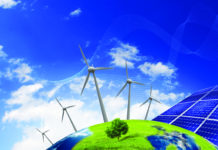- The global wind industry installed a record 93 GW of new capacity in 2020 – a 53% year-on-year increase, showing strong resilience in the face of COVID-19.
- Total global wind power capacity is now up to 743GW, helping the world to avoid over 1.1 billion tonnes of CO2 annually – equivalent to the annual carbon emissions of South America.
- However, the world needs to be installing a minimum of 180 GW of new wind energy every single year to avoid the worst impacts of climate change, meaning that the industry and policymakers need to act fast to accelerate deployment.
- Governments across the world must take a ‘climate emergency’ approach to eliminate red tape and planning delays and expand grid infrastructure to further scale-up wind power at the pace required
- Wind power is a cornerstone of achieving net zero and powering a green recovery as a cost-competitive, resilient power source with the most decarbonisation potential per MW.
Through technology innovations and economies of scale the global wind power market has nearly quadrupled in size over the past decade. The growth in 2020 was driven by a surge of installations in China and the US, the world’s two largest wind power markets. The two countries have over half of the total wind power capacity and accounted for 75% of the new installations last year.
According to the scenarios that have been established by international energy bodies such as IRENA and the IEA, the world needs to be installing a minimum of 180 GW of new wind energy every year to limit global warming to well below 2°C above pre-industrial levels, and will need to install up to 280GW annually to maintain a pathway compliant with meeting net zero by 2050.
GWEC is calling on policymakers to take a true ‘climate emergency’ approach to allow a faster ramp up including:
- Eliminating red tape and reforming administrative structures in order to speed up and streamline licensing and permitting for projects
- Carry out a massive increase in investments in grid, ports and other infrastructure needed to allow the ramp up in installations
- Re-vamp energy markets to ensure that they account for the true social costs of polluting fossil fuels and facilitate a rapid transition to a system based on renewable energy




Living in Norfolk for the last 3 years, I tracked down the issues being raised of the impact of wind power, by many affected local populations.. The number of objections runs into 100’s.
In July 2020, after 4 years the secretary of state approved the planning app to layover 40 miles of cabling across many parts of rural Norfolk, to get to the nearest grid connection. BUT the approval was overthrown by an appeal from ONE resident on the route. Vattenfall, the applicant is now saying that the delays could mean the whole project is abandoned. I can see that these sorts of delays can make any subsequent plans and proposals to have the investment cancelled.
So there is a very big risk to the creation of renewable energy services in the UK, sink back into the North Sea